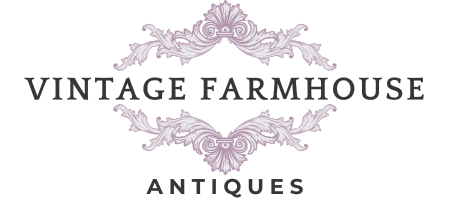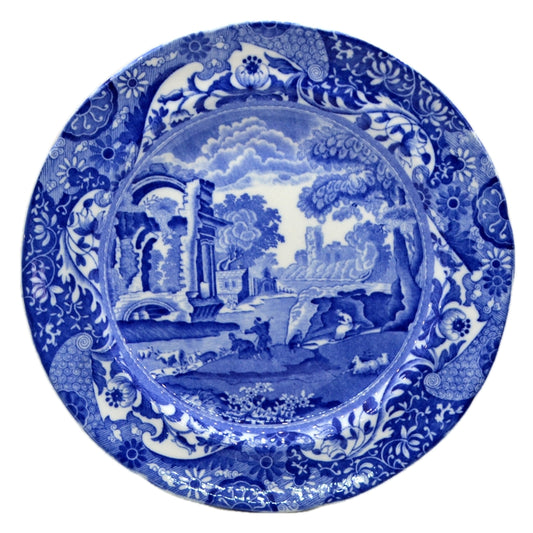Spode Blue Italian China
Spode's Blue Italian china is one of the most iconic and enduring patterns in the world of English ceramics, renowned for its classical design and rich history. Here’s a some background and history of this popular Spode china pattern that you may find interesting.
Spode Blue Italian history
Founded by Josiah Spode: The Spode company was established by Josiah Spode in 1770 in Stoke-on-Trent, England. Spode is credited with perfecting the formula for bone china and developing the underglaze blue transfer printing technique that became central to the Blue Italian china pattern design.
Introduction of Blue Italian: The Blue Italian china pattern was first introduced in 1816. Its timeless appeal has kept it in continuous production since then, making it one of the longest-running English china patterns in ceramic history.
Design Inspiration: The blue Italian china pattern draws heavily on themes of the Grand Tour, a traditional trip around Europe undertaken by upper-class young men in the 17th to 19th centuries. It features an idyllic, pastoral scene set in a classical Italian landscape, inspired by 17th-century Italian prints.
Design Elements
- Scenic Central Image: The central scene often depicts Italianate ruins with classical architecture, pastoral figures, and lush landscapes. The design is intricate, featuring fine detailing and a sense of depth.
- Border Motif: Surrounding the central image is a rich border pattern known as a "brocade border." This intricate border consists of ornate floral and foliage designs, adding to the decorative appeal of the piece.
- Colour: True to its name, the Blue Italian china pattern is rendered in cobalt blue on a white background. The blue and white china combination is classic and has remained fashionable over centuries.
Production Techniques
Transfer printing: The Blue Italian pattern utilises the transfer printing technique. This involves engraving the design onto a copper plate, inking it, and then transferring the ink onto tissue paper. The tissue paper is applied to the ceramic piece, and the pattern is transferred onto the surface. This method allows for consistent and detailed replication of the design.
Underglaze decoration: The blue pattern is applied under the glaze, which means it is protected by a layer of transparent glaze. This technique not only enhances the durability of the pattern but also gives the finished piece a glossy, vibrant look.
Bone china: While originally produced in earthenware, Spode also produces the Blue Italian pattern in fine bone china. Bone china is known for its strength, translucency, and luxurious feel.
Range and uses
Tableware: The Blue Italian range includes a wide variety of tableware items, such as plates, bowls, cups, saucers, serving pieces, and teapots and even napkins, and placemats Each piece of china is adorned with the intricate Spode Blue Italian pattern.
Collectibles and decorative pieces: Beyond functional tableware, Spode's Blue Italian collection extends to decorative items like vases, figurines, table lamps and more. These pieces are highly collectible.
Significance and legacy
Cultural Impact: The Spode Blue Italian pattern has become synonymous with classic English blue and white china design and has been a staple in homes around the world for over two centuries. It embodies the elegance and craftsmanship of traditional English ceramics.
Collectibility: Due to its long production history and enduring popularity, Blue Italian china is highly collectible. Antique pieces, especially those from the early 19th century, are particularly sought after by collectors.
Modern production: Today, the Blue Italian pattern is still produced by Spode, now part of the Portmeirion Group. While methods have modernised, the company maintains the quality and attention to detail that made the pattern famous. Modern Spode Blue Italian is available to buy in most good department stores, and widely available online.
Spode's Blue Italian china is more than just a tableware pattern; it is a piece of art that represents a significant chapter in the history of ceramics. Its timeless appeal means it is still very popular today both with collectors and for use in homes.
Here is an example of Spode Blue Italian china showing the classical design:

Dishwasher Safety
Modern Spode Blue Italian: The current production of Spode Blue Italian tableware is generally dishwasher safe. This includes pieces made from earthenware and fine bone china. Spode's manufacturing processes ensure that the vibrant blue patterns and the durability of the pieces can withstand the rigours of regular dishwasher use.
Care Guidelines: Spode advises following these guidelines to maintain the beauty and longevity of Blue Italian pieces:
- Use a gentle or china/crystal cycle if your dishwasher has one.
- Avoid using harsh detergents or abrasive cleaners which can dull the finish or damage the design.
- Allow the pieces to cool down gradually after the washing cycle to prevent thermal shock.
Older or antique pieces of Spode Blue Italian china: For older or antique Blue Italian pieces, it’s best to exercise more caution. These items were not designed to withstand the high temperatures and abrasive detergents used in modern dishwashers. Hand washing with a mild liquid detergent is recommended to preserve their condition, and avoid the use of abrasive cleaning methods which can dull the finish of the china.
















